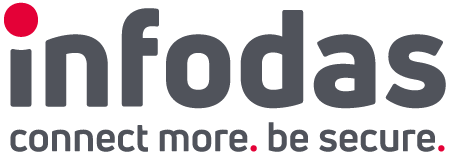View
Sorting
From A to Z
Products found: 1
INFODAS SDoT Diode
The SDoT Diode is developed and manufactured in Germany following the Security by Design principle.
As an unidirectional security gateway, the SDoT Diode allows government, defense, and critical infrastructure clients to maintain their confidentiality and integrity requirements for data provision or receipt in digitization and Industry 4.0 projects.
Contrary to firewalls or bi-directional security gateways, data diodes don’t filter data according to policies that require continuous maintenance. Instead, a high degree of security is achieved by segmenting systems according to protection levels and enforcing unidirectional data flow.
The main features of our data diode:
- 9.1 Gbit/s;
- Multi Protocol;
- Secure Architecture,
- Database replication / updates;
- Transfer of sensor data (e.g. Radar, ELINT, Satellite);
- Lawful interception;
- Video / Audio streaming;
- Remote Screen View / Website mirror;
- Patch management and malware signatures;
- Logging and backup;
- Secure printing.
- Database / Server replication (e.g. OPC, Modbus, Historian);
- Transfer of OT data;
- IT service management;
- Managed security services (SIEM to SOC);
- Video / Audio streaming;
- Remote Screen View;
- Patch management and malware signatures;
- Logging and backup;
- Secure printing.
-
-
ROI-
-
0
0
The ROI4CIO Product Catalog is a database of business software, hardware, and IT services. Using filters, select IT products by category, supplier or vendor, business tasks and problems. Find the right business solutions by using a neural network search based on the results of deployment products in other companies.
